De todos los géneros fotográficos, pocos transportan al espectador a mundos nuevos e invisibles como la macrofotografía de flores. Este estilo fotográfico de primeros planos revela intrincados detalles de pétalos, texturas y colores que a menudo pasan desapercibidos a simple vista. Tanto para principiantes como para fotógrafos experimentados, la fotografía de flores es una forma gratificante y accesible de explorar la creatividad. Con sujetos en flor disponibles en su jardín local, patio trasero o parque del barrio, no tiene que viajar muy lejos para capturar la delicada belleza de la naturaleza. Dominar las técnicas macro, elegir el equipo adecuado y aprender a disparar en distintas condiciones de iluminación puede llevar tus fotos de flores al siguiente nivel.
En este post, aprenderás:
- Las mejores condiciones de luz y tiempo para fotografiar flores
- Cómo elegir objetivos y ajustes de cámara para obtener imágenes macro nítidas
- Consejos de composición para crear fotos de flores dinámicas y artísticas
- Técnicas para fotografiar flores en entornos difíciles o en interiores
- Recomendaciones de equipo, incluidos los mejores objetivos Tamron para macrofotografía de flores
Las flores se pueden fotografiar de muchas formas: con luz natural, con luz reflejada, en macrofotografía o en composiciones abstractas. Ofrecen infinitas posibilidades de expresión artística. Aquí tienes unos sencillos pasos para iniciarte en la fotografía macro de flores.
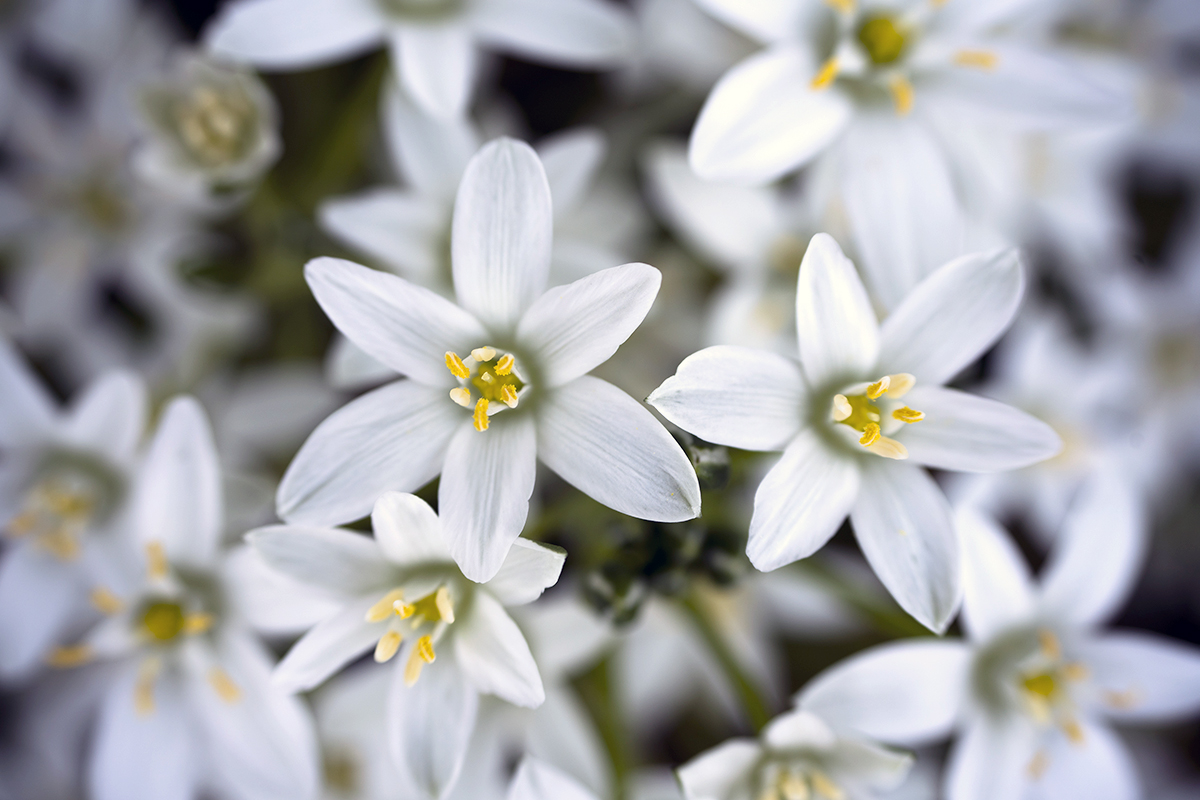
CONSEJO 1: La mejor iluminación para fotografiar flores
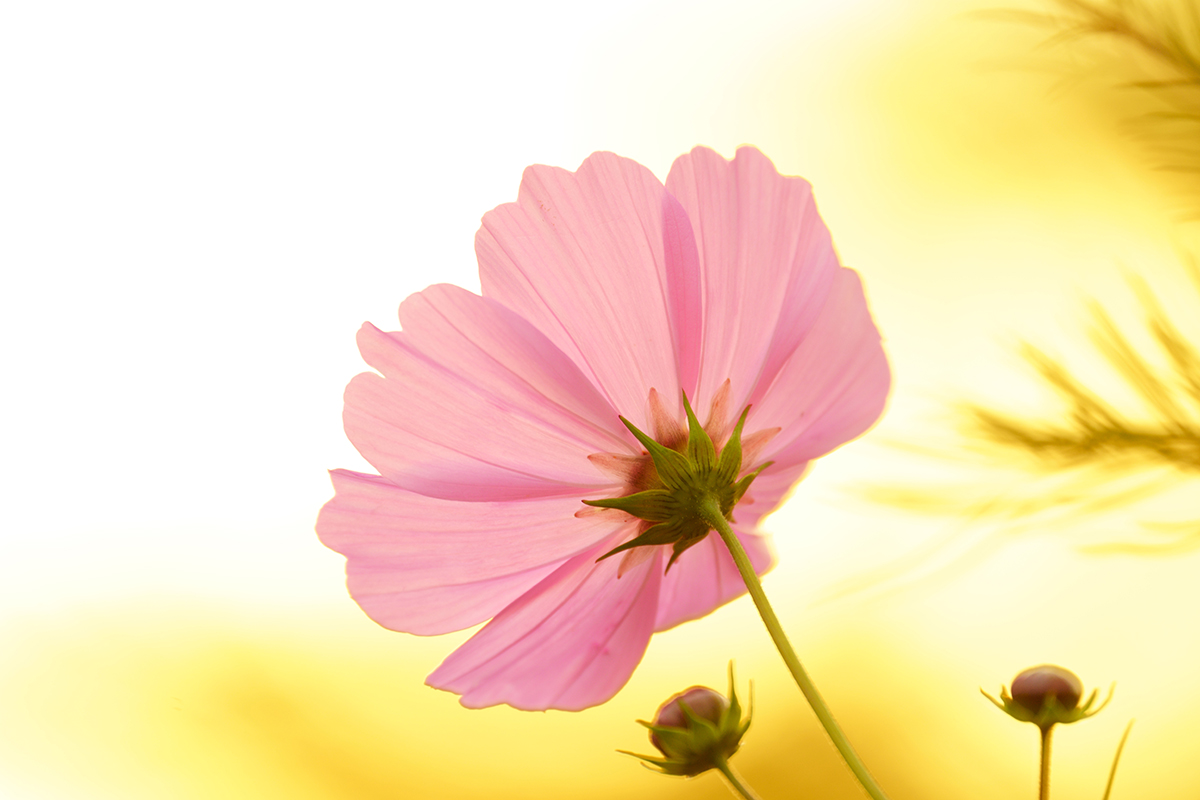
La mejor hora del día para fotografiar flores
El mejor momento para fotografiar flores, sobre todo macroflores, es a primera hora de la mañana o a última de la tarde, cuando la luz del sol es más suave y favorecedora. Estas horas doradas ofrecen la luz natural ideal para fotografiar flores, reduciendo las sombras duras y realzando los detalles. Siempre que sea posible, evita utilizar el flash; en su lugar, confía en la luz natural suave y difusa para resaltar las intrincadas texturas de tus primeros planos de flores.
Crea imágenes de flores de ensueño a contraluz
Cuando las flores están retroiluminadas por el sol, puedes crear imágenes etéreas y de ensueño que brillan con calidez. La retroiluminación no sólo añade profundidad, sino que también ayuda a que el motivo floral destaque sobre un fondo más oscuro. Cuando utilices esta técnica, expone la parte más brillante de la flor para conservar el color y los detalles.
Utiliza el destello de lente para añadir un toque creativo
Incorporar destellos de lente en la fotografía de flores puede añadir tonos cálidos y complementarios que contrastan a la perfección con hojas verdes o fondos cubiertos de hierba. Utilízalo de forma creativa para mejorar la composición y añadir interés visual a tus fotos de flores de jardín.
Iluminar el sujeto con reflectores
Si la flor no está bien iluminada de forma natural, utiliza un pequeño reflector plegable para rebotar la luz sobre ella. Esta sencilla herramienta te ayudará a iluminar uniformemente el sujeto y a obtener más detalles en tus fotos macro de flores. También puedes utilizarlo para suavizar o eliminar las sombras duras. También puedes cambiar de posición para fotografiar otra flor que no esté expuesta directamente al sol, lo que te permitirá conseguir una exposición más equilibrada y un contraste más suave.
Encontrar la luz moteada para composiciones mágicas
Busque zonas de luz difusa en el jardín, a menudo bajo árboles o copas abiertas. Estas zonas de luz filtrada pueden revelar oportunidades inesperadas para capturar hermosas fotos de flores del jardín. Explora la zona para encontrar flores que estén iluminadas de forma natural y listas para un primer plano.
Fotografías macro nítidas a primera hora de la mañana
Las primeras horas de la mañana también suelen ser más tranquilas, con poco viento, condiciones ideales para fotografiar flores al aire libre. Las macrofotografías pueden resultar difíciles cuando los pétalos se mueven, por lo que la quietud es clave para captar imágenes nítidas y detalladas.
CONSEJO 2: Compruebe el tiempo
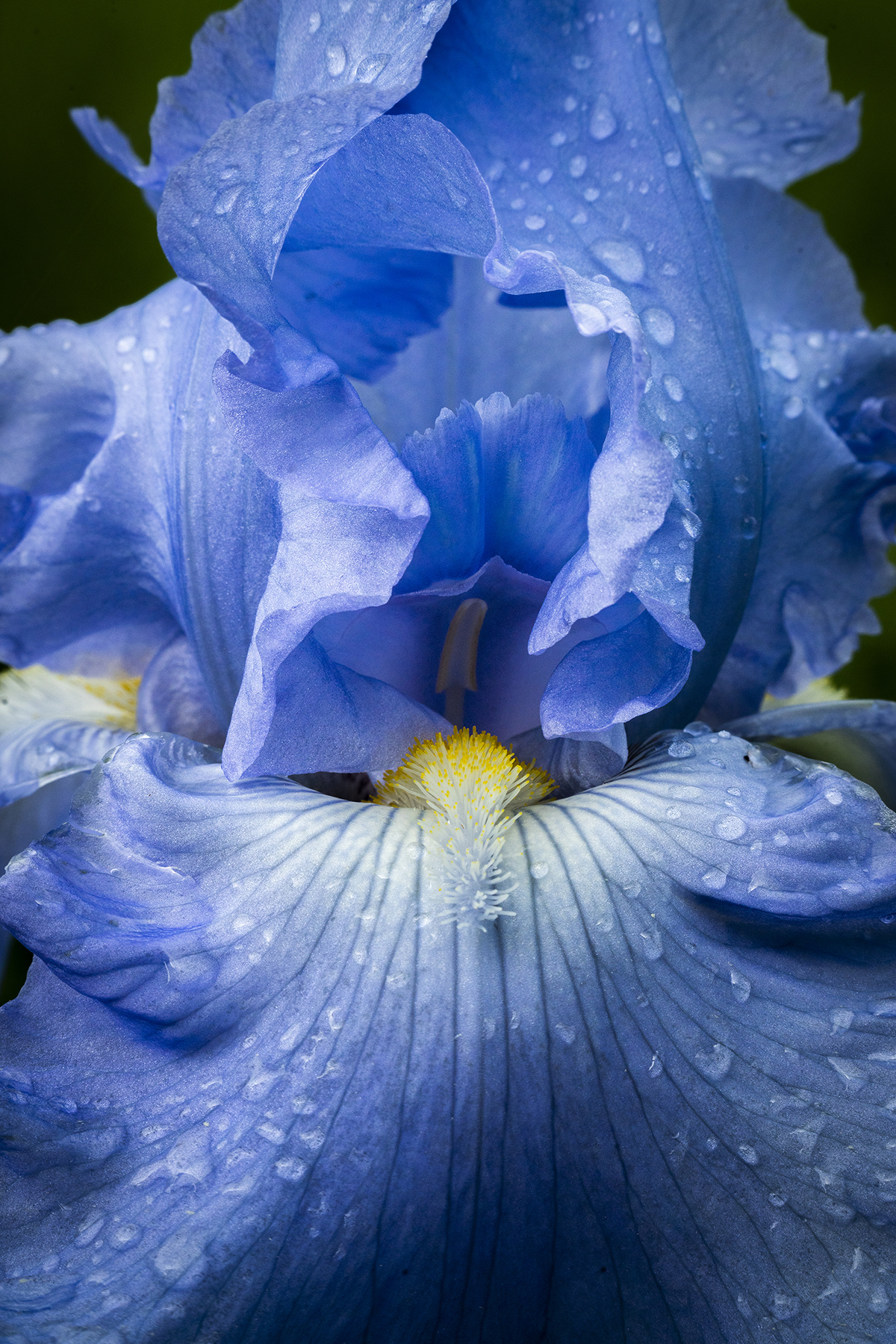
Fotografía de flores en días nublados y lluviosos
No hace falta que el tiempo sea perfecto para hacer fotos de flores espectaculares; de hecho, los días nublados y lluviosos suelen ser ideales para la fotografía macro de flores. Hacer fotos de flores en un día nublado ayuda a reducir el contraste y a resaltar los detalles sutiles de los pétalos y las texturas. La luz suave y difusa es perfecta para captar la fina estructura de las flores sin la distracción de las sombras profundas.
Los días de lluvia ofrecen oportunidades creativas únicas para fotografiar flores en primer plano. Las gotas de agua se adhieren de forma natural a los pétalos y las hojas, añadiendo elementos visuales atractivos a tus imágenes. Estas fotos de flores cubiertas de gotas de lluvia aportan un aspecto refrescante y espectacular difícil de reproducir artificialmente.
Cómo fotografiar flores con luz solar intensa
Si vas a fotografiar flores en un día soleado, la paciencia y el tiempo son la clave. Espera a que el sol se oculte tras una nube para crear una luz más suave y equilibrada que realce el motivo sin sobreexponer las luces.
Utilizar un filtro polarizador para fotografiar flores puede mejorar aún más los resultados. Un polarizador ayuda a controlar los reflejos, reduce los reflejos no deseados en pétalos u hojas mojadas e intensifica los colores naturales. Esto crea una imagen de la flor más saturada con verdes más profundos y matices más ricos, perfecto para la fotografía macro de jardín en condiciones brillantes.
CONSEJO 3: Ajustes de la cámara para macrofotografía de flores
Es difícil sujetar la cámara cuando se dispara a una velocidad de obturación inferior a la distancia focal del objetivo. Por ejemplo, si disparas a 100 mm, la velocidad de obturación debe ser de al menos 1/100 de segundo para evitar que la cámara salga movida. Utiliza un trípode si no puedes alcanzar la velocidad necesaria para tu objetivo. Utiliza un ISO bajo para obtener la mejor calidad de imagen.
CONSEJO 4: Juega con la profundidad de campo
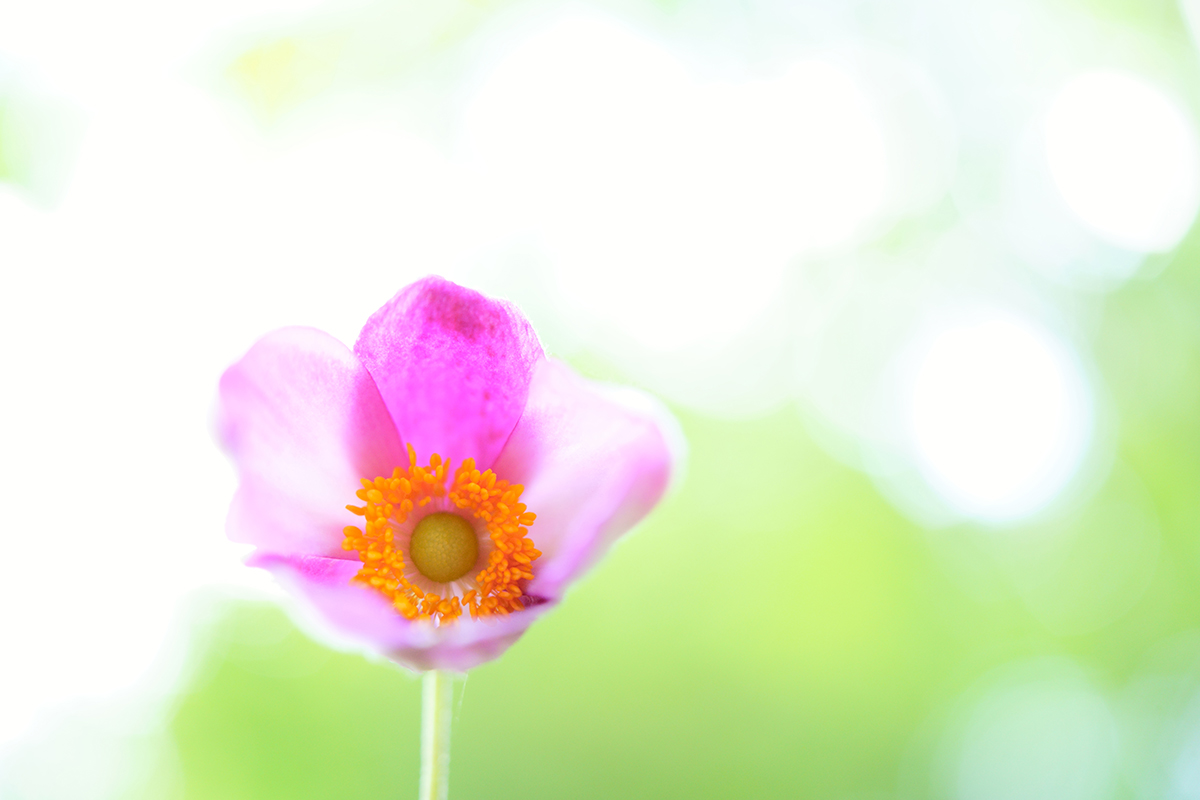
Controla la profundidad de campo con los ajustes de apertura
Para crear fotos macro de flores visualmente impactantes, experimenta con la apertura del objetivo para conseguir el aspecto que deseas. Si utilizas un diafragma amplio (como f/2,8 o f/4) crearás una profundidad de campo reducida, difuminando el fondo y centrando la atención en la flor como sujeto principal. Esta técnica ayuda a aislar la flor de los elementos de distracción del fondo, haciendo que destaque con claridad artística.
Usa teleobjetivos para fondos suaves
La poca profundidad de campo se acentúa aún más cuando se utiliza una distancia focal de teleobjetivo y se coloca la cámara cerca de la flor. Esta combinación mejora el desenfoque del fondo, un efecto muy deseado en la fotografía macro de flores. Sin embargo, es importante revisar la imagen en la pantalla LCD para asegurarse de que las partes clave de la flor están enfocadas con nitidez, especialmente los pétalos, el centro o las gotas de agua.
Cuándo parar para concentrarse mejor
Si una parte excesiva del sujeto aparece difuminada, reduce el diafragma a f/8 o f/11. Estos ajustes aumentan la profundidad de campo. Estos ajustes aumentan la profundidad de campo, asegurando que una mayor parte de la flor permanezca nítida y manteniendo al mismo tiempo una cierta separación del fondo. Como estás fotografiando un primer plano, el fondo se suavizará de forma natural, incluso con aperturas más pequeñas.
Consideraciones de fondo en la fotografía de flores
Si el fondo es mínimo, como un cielo azul despejado, un césped verde o follaje sombreado, puede que no necesites un desenfoque extremo. En estos casos, reducir el diafragma no perjudicará la estética y te permitirá obtener un sujeto más nítido. Evalúa cada escena para encontrar el equilibrio adecuado entre el desenfoque del fondo y la nitidez del sujeto, un aspecto clave de una composición fotográfica de flores atractiva.
CONSEJO 5: Consejos de composición creativa para fotografiar flores
Experimenta con los ángulos para hacer fotos únicas de flores
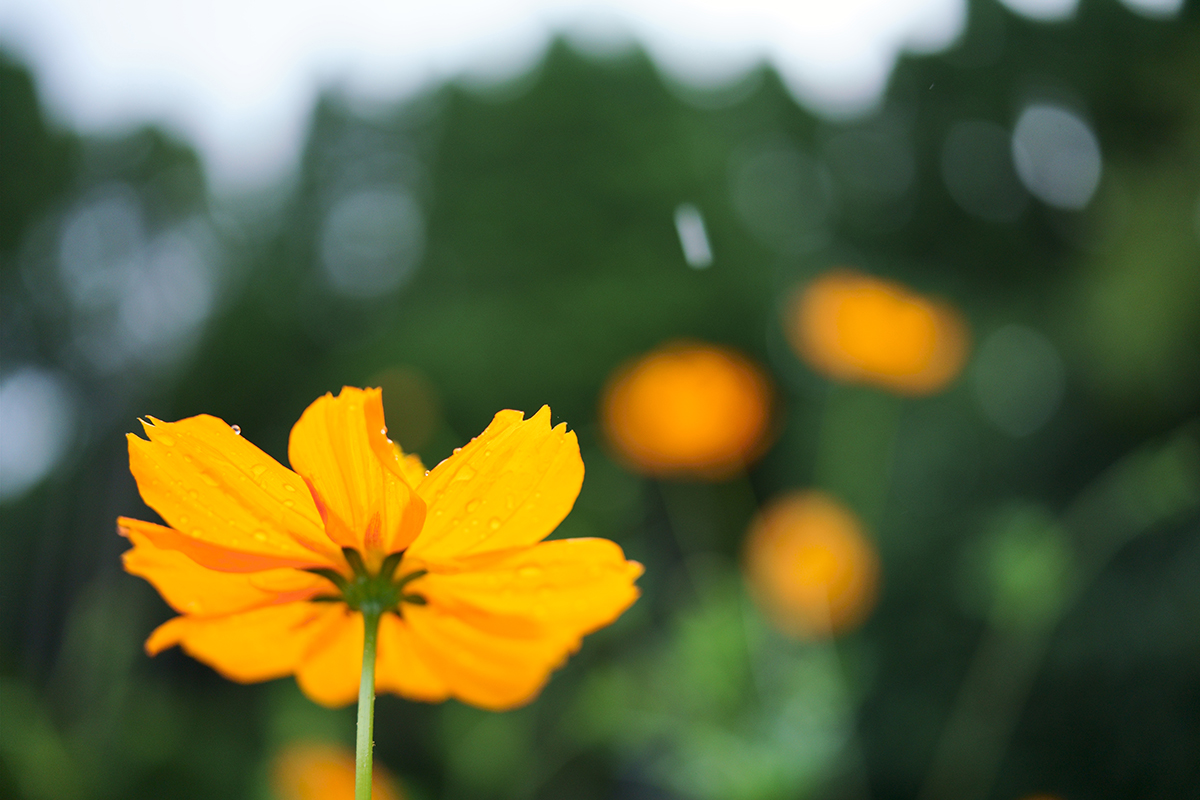
Una buena composición fotográfica de flores empieza por la perspectiva. Muévete alrededor del sujeto para explorar ángulos creativos: fotografía flores desde arriba, desde abajo o de frente. Agáchate y dispara desde el suelo para obtener una perspectiva fresca y envolvente, o túmbate boca arriba para capturar flores orientadas hacia arriba con la luz del sol atravesando los pétalos.
Enmarque su flor intencionadamente
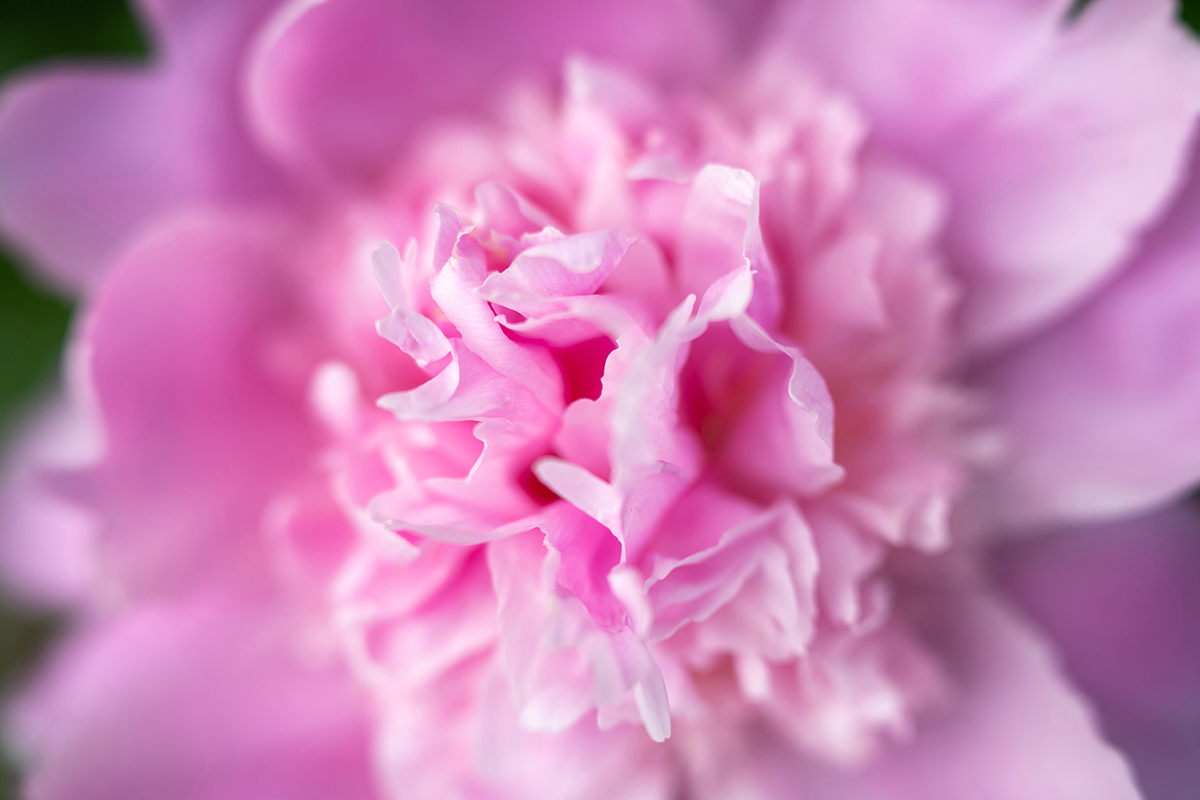
Piensa en cómo enmarcar la foto de la flor. No es necesario que incluyas toda la flor; a veces, cortar los pétalos o llenar todo el encuadre con parte de la flor crea más impacto. Acércate para hacer macrofotografías y elimina las distracciones. Llenar el encuadre introduce al espectador en la imagen y resalta los detalles.
Utilizar la regla de los tercios y los puntos fuertes
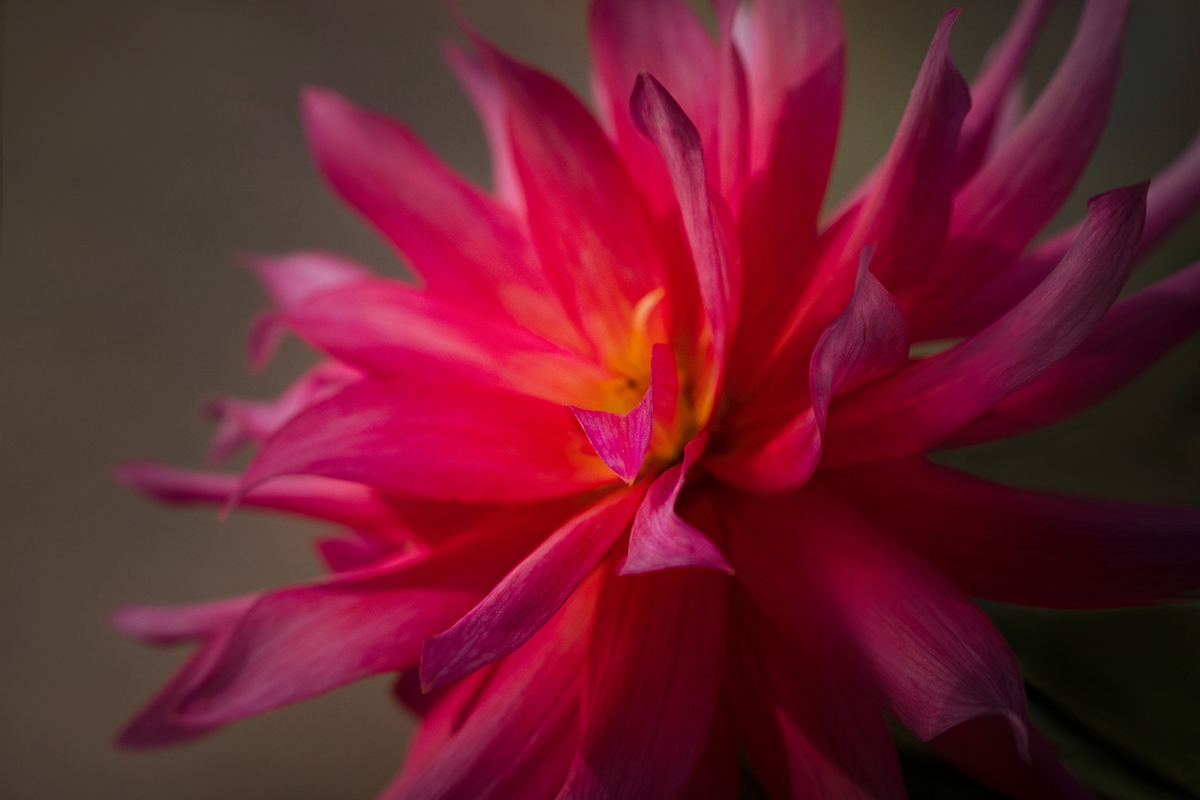
Evita colocar siempre la flor en el centro. Utiliza las líneas de cuadrícula de tu cámara para colocar el sujeto en un punto de fuerza, donde se cruzan los tercios horizontal y vertical. Esta es una técnica de composición clásica de la regla de los tercios que añade equilibrio e interés.
Controla el fondo para mejorar la composición
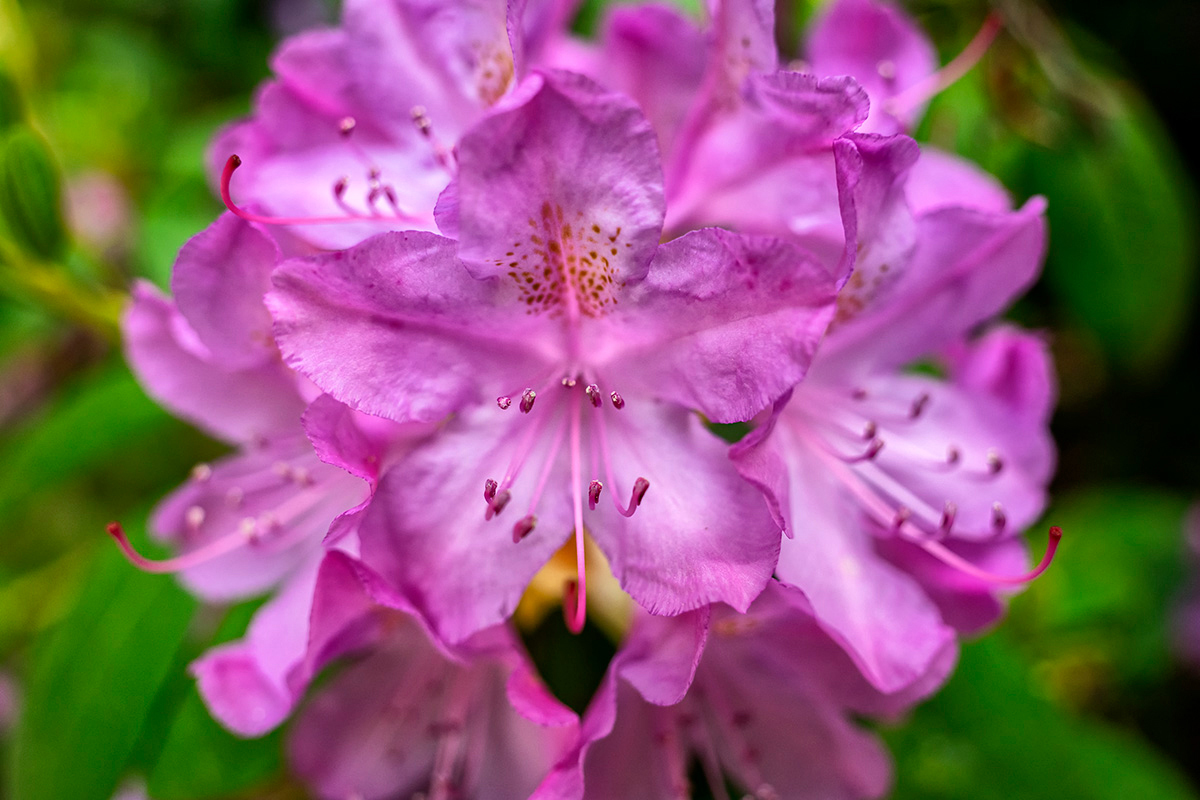
En la fotografía de flores, una buena composición no sólo incluye el sujeto, sino también el fondo. Utiliza un fondo sencillo, como follaje verde, cielo azul o tierra sombreada, para resaltar la flor. Si el fondo es demasiado recargado, coloca un trozo de espuma negra o gris detrás de la flor para aislarla y mantener el enfoque en el sujeto.
Acércate para hacer macrofotografías dinámicas de flores
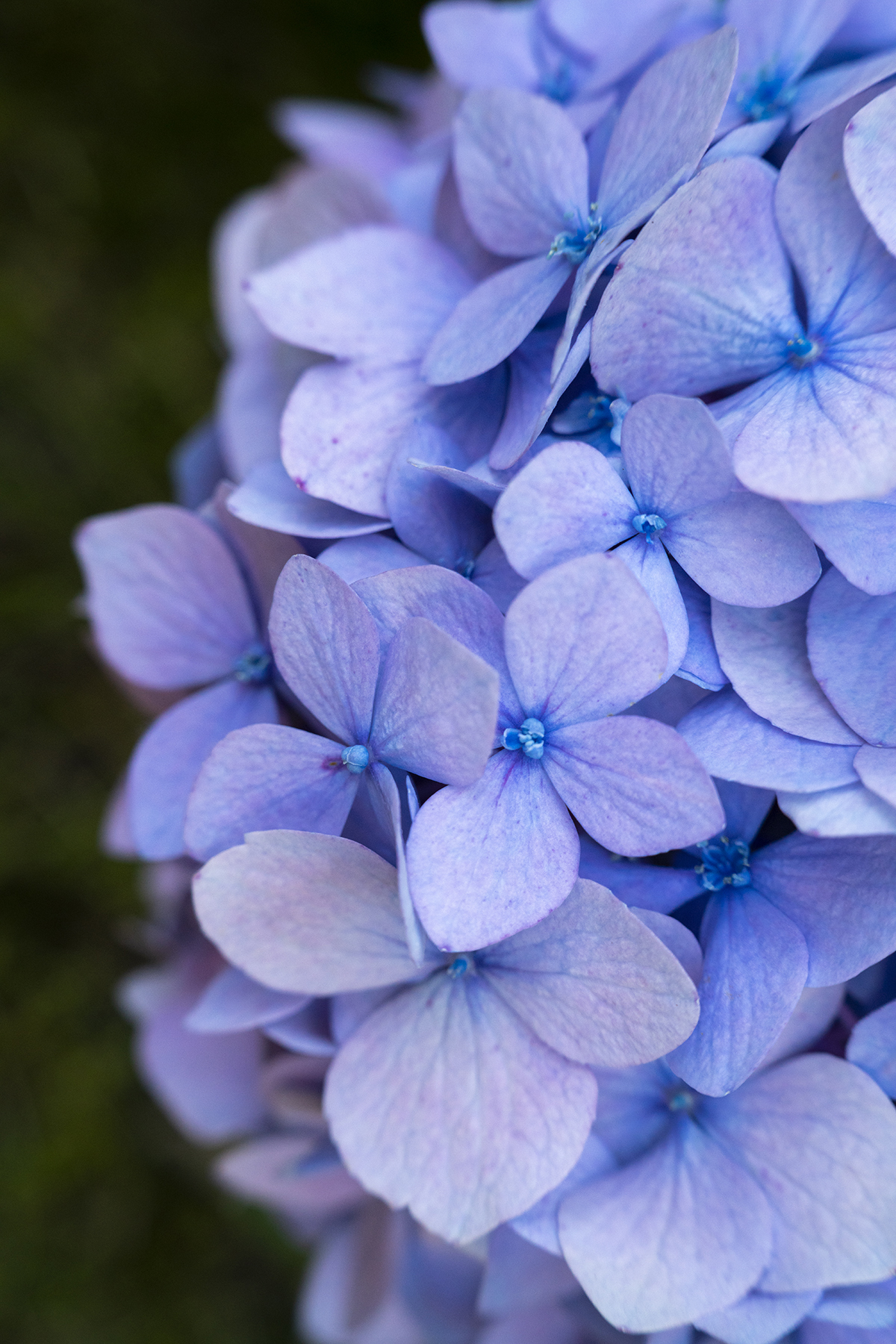
Nunca se está demasiado cerca cuando se fotografían flores. Cuanto más cerca estés, más detalles macro captarás. Acércate para resaltar un solo pétalo, el centro de la flor o incluso texturas abstractas como el xilema de una hoja. Las composiciones macro a menudo se benefician de la cercanía extrema, creando un resultado más envolvente y artístico.
CONSEJO 6: Dedique tiempo a una flor
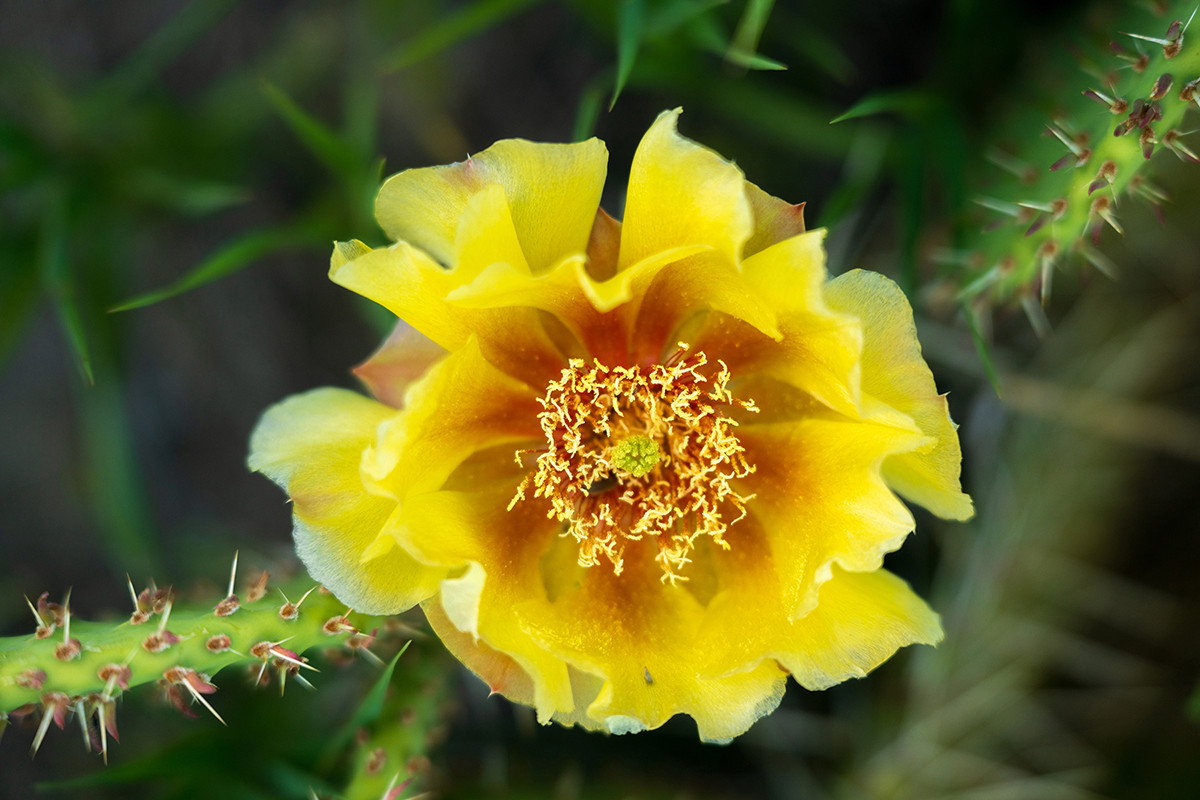
Puedes crear muchos tipos diferentes de imágenes con un solo sujeto. Piensa en fotografiar una flor durante 30 minutos. Fotografíala desde varios ángulos, llena el encuadre con una parte de la flor o retírate para capturar toda la planta.
CONSEJO 7: Imágenes abstractas de flores
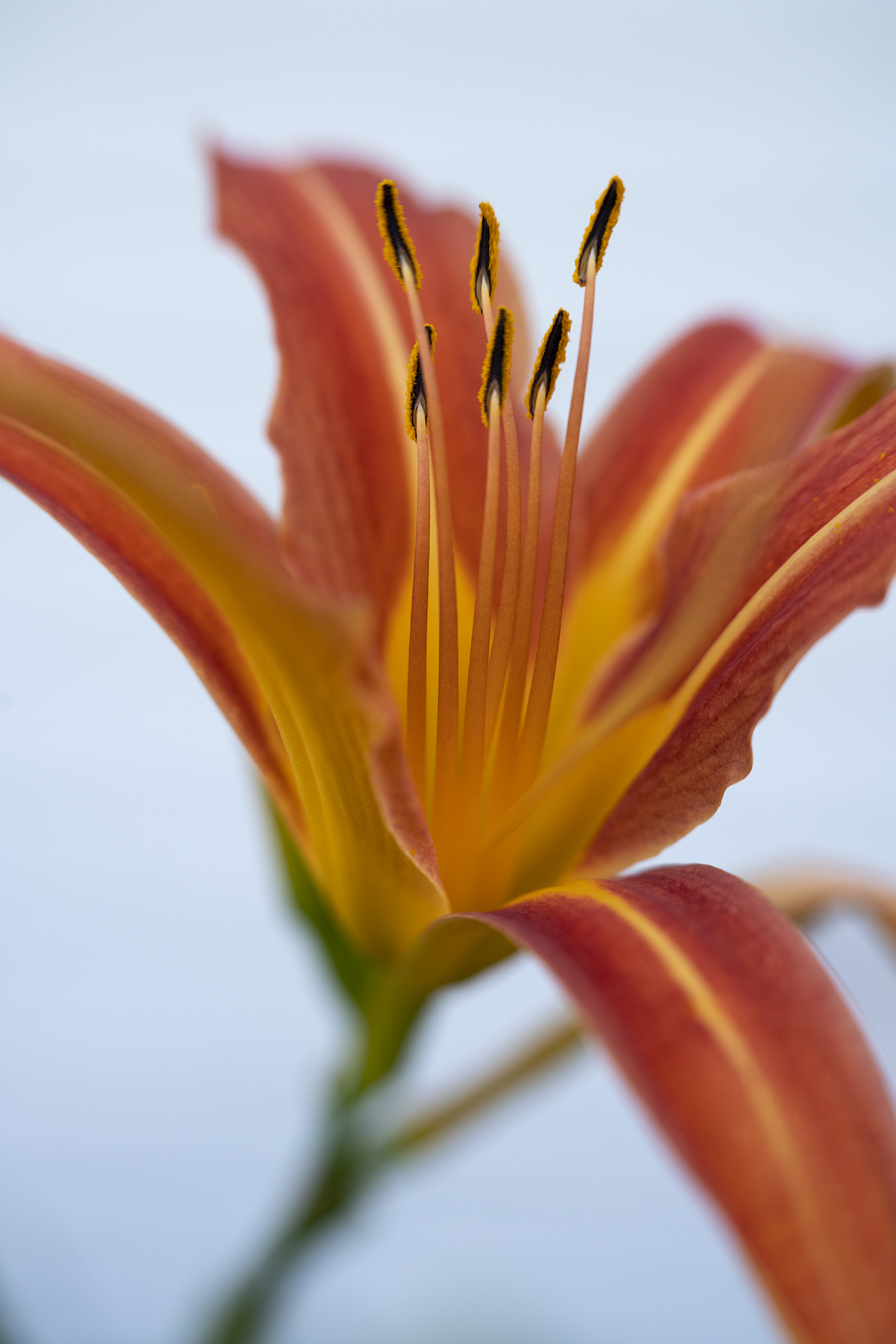
La fotografía macro abstracta de flores puede parecer a veces caótica, pero con el enfoque adecuado se convierte en una poderosa forma de expresión artística. Cuando llenes el encuadre con un solo sujeto, como un pétalo o una flor, busca patrones agradables y una simetría natural que guíen la mirada del espectador. La superposición de detalles en la composición añade complejidad e invita al espectador a explorar múltiples puntos focales dentro de la imagen.
El xilema, o venas que recorren un pétalo o una hoja, es un tema especialmente intrigante. Estos finos detalles revelan la estructura interna de la planta, mostrando la belleza oculta de cómo se mantiene hidratada una flor. Para conseguir un efecto más espectacular, identifica de dónde viene la luz y cambia de posición para crear una foto macro de flores a contraluz que resalte la translucidez y la delicada textura.
Estos detalles en primer plano se convierten en las partes más atractivas de la foto. Céntrate en una pequeña parte del pétalo o la hoja y deja que el resto de la imagen se difumine suavemente. Esta técnica no sólo enfatiza el sujeto, sino que también introduce un estilo abstracto que añade profundidad y misterio a tu composición fotográfica creativa de flores.
CONSEJO 8: Equipo para fotografía macro de flores
Contar con el equipo adecuado puede suponer una gran diferencia a la hora de capturar fotos macro de flores nítidas, detalladas y creativas. Desde la estabilización de la cámara hasta la mejora del sujeto con elementos añadidos, el equipo adecuado para la fotografía de flores te ayuda a mejorar tus imágenes con precisión y control. Tanto si haces fotos en el jardín de tu casa como en un jardín botánico, estas herramientas son esenciales para conseguir resultados de aspecto profesional.
- Utiliza un trípode para evitar que las fotos salgan movidas, especialmente en condiciones de poca luz o cuando utilices velocidades de obturación más lentas.
- Lleva contigo un pulverizador cuando fotografíes flores para añadir gotas de agua a tus imágenes. Las gotas de agua en las flores añaden un atractivo elemento visual a tus fotos de jardín. Este método te permite controlar cuidadosamente el volumen y la colocación de las gotas de agua.
- Utiliza objetivos macro u objetivos con una función macro como 1:1, 1:2. Macro es cualquier relación de ampliación máxima de 1:4 o superior. Utilizar un objetivo macro o de primer plano puede ayudarte a captar los pequeños detalles de una flor. Esto incluye la textura de los pétalos y los patrones de los estambres. Objetivos macro Tamron tienen una excelente capacidad para primeros planos. Algunos de los objetivos cuentan con macro 1:1 o 1:2 y excelentes distancias mínimas de enfoque. Estas características son perfectas para fotografiar flores.
Los mejores objetivos para fotografiar flores
- Tamron 90 mm F/2,8 Di III VXD 1:1 Macro (Modelo F072) para cámaras sin espejo con montura Sony E y Nikon Z. Este objetivo cuenta con una verdadera relación de ampliación 1:1, por lo que es ideal para capturar imágenes macro de flores a tamaño real con un detalle impresionante. Este objetivo ofrece un enfoque nítido y un rendimiento excelente tanto para fotografía de primeros planos como para retratos. El objetivo es resistente a la humedad y tiene un tamaño de filtro de 67 mm.
- Tamron 50-400 mm F/4,5-6,7 Di III VC VXD (Modelo A067) para cámaras sin espejo con montura Sony E y Nikon Z. Este objetivo tiene la característica única de un aumento máximo de 1:2 a 50 mm. El rango de distancia focal de este objetivo es ideal para la fotografía de flores en un jardín o arboreto, donde es posible que no pueda acercarse mucho a las flores. Utiliza el objetivo para acercarte a la flor que prefieras y obtener imágenes dinámicas de flores con teleobjetivo. El objetivo es resistente a la humedad y tiene un tamaño de filtro de 67 mm.
- Tamron 18-300 mm F/3,5-6,3 Di III-A VC VXD para las cámaras sin espejo APS-C de las series Sony E y Fujifilm X. Este objetivo zoom todo en uno ofrece un extraordinario macro 1:2, así como un rango de zoom de 16,6X. Con este objetivo, puede capturar bellas imágenes de multitud de flores en flor, así como imágenes de primer plano. El objetivo es resistente a la humedad y tiene un tamaño de filtro de 67 mm.
- Tamron 35 mm F/2,8 Di III OSD para cámaras sin espejo con montura tipo E de Sony. Este objetivo zoom de 35 mm tiene un diafragma rápido y capacidad macro 1:2 para disfrutar de una auténtica experiencia macro. El objetivo cuenta con una construcción resistente a la humedad y un tamaño de filtro de 67 mm.
CONSEJO 9: Postprocesado de fotografías macro de flores
El nivel de procesado depende de las preferencias personales, pero lo mejor es que las imágenes de flores tengan un aspecto lo más natural posible. Ajusta el contraste y las altas luces. Quizá quieras enfocar la imagen en las zonas en las que quieras mostrar más detalles. Aplica claridad para que la foto resalte más.
CONSEJO 10: Temporada baja y tiempo desapacible
No dejes que el mal tiempo te impida fotografiar flores. Puedes intentar fotografiar flores en interiores si el tiempo no acompaña. Compra flores en una floristería local y encarga elementos adicionales como plumas, mariposas montadas y conchas marinas para crear composiciones artísticas. Así podrás seguir practicando tus habilidades fotográficas y experimentando con diferentes arreglos, incluso cuando el tiempo en el exterior no sea el ideal.
Conclusión: Captura la belleza de la naturaleza con la fotografía macro de flores
Desde delicados pétalos hasta intrincados patrones, la fotografía macro de flores le permite descubrir y documentar los impresionantes detalles que esconde la naturaleza. Cada floración ofrece una oportunidad única para crear primeros planos de flores que destaquen texturas, colores y estructuras que a menudo pasan desapercibidos a simple vista. Experimentando con la luz, la composición y la perspectiva, descubrirá mundos enteros de macrofotografía en su jardín, patio trasero o paraje natural favorito. Tanto si es un aficionado como un fotógrafo experimentado, la fotografía de flores le invita a reducir la velocidad, conectar con la naturaleza y capturar su fugaz belleza, pétalo a pétalo.
Infórmese sobre estas lentes y más en un distribuidor autorizado Tamron en su zona o visite la Tienda TAMRON hoy.
Más consejos fotográficos | Ver vídeos | Más información sobre los objetivos Tamron | Galería de fotos
